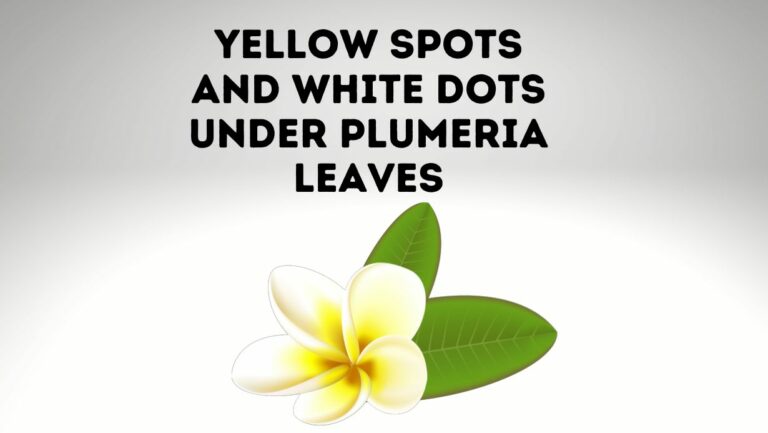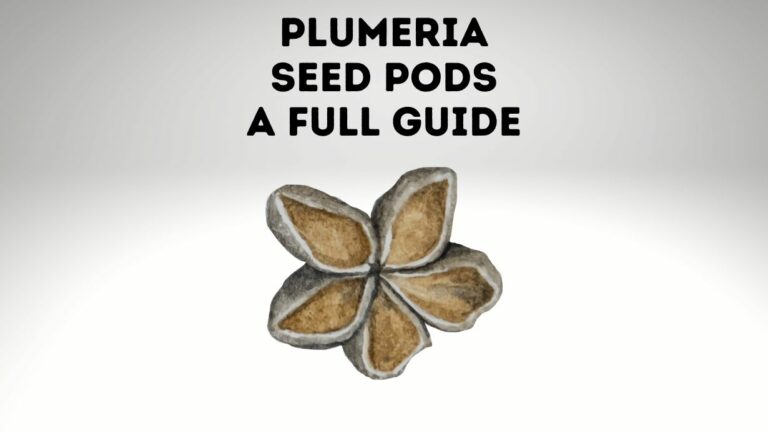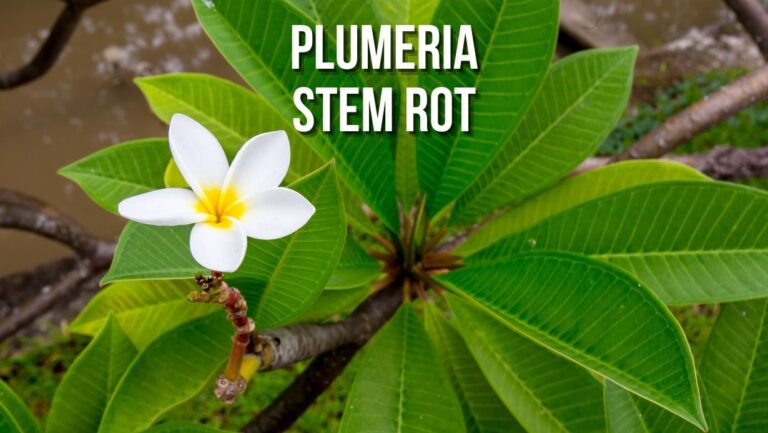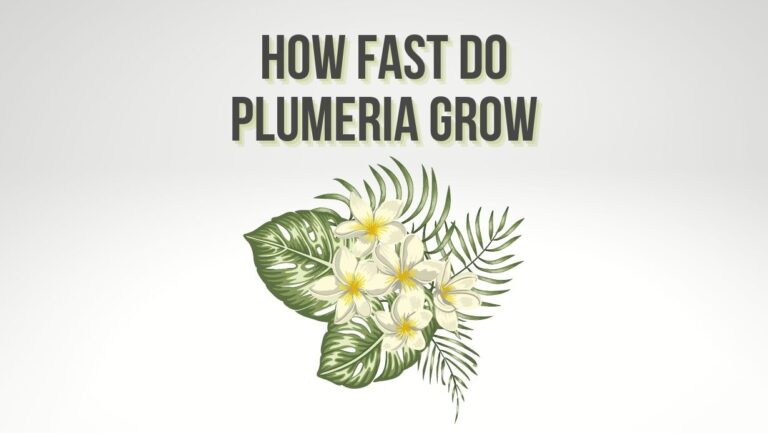
Repotting is an essential aspect of plumeria care that helps ensure the optimal growth and blooming of these beautiful tropical plants. Whether you’re a beginner or an experienced gardener, understanding the process of repotting plumeria is crucial for maintaining their health and vitality. In this article, we will provide a comprehensive guide on repotting plumeria, covering everything from when to repot to the step-by-step process and common mistakes to avoid.
Benefits of Repotting Plumeria
Repotting plumeria offers several benefits that contribute to the overall well-being of the plants. Here are some advantages of repotting:
Enhanced growth and blooming
Repotting provides plumeria plants with fresh soil and additional space for root development. This promotes healthier growth and encourages abundant blooming, resulting in more vibrant and beautiful flowers.
Refreshed soil and nutrient availability
Over time, the soil in the current pot may become depleted of nutrients, affecting the plant’s health. Repotting allows for the replenishment of soil, ensuring an adequate supply of nutrients for optimal growth.
Prevention of root-bound conditions
Plumeria plants are prone to becoming root-bound, where the roots outgrow the pot and become tangled and compacted. Repotting prevents this condition by giving the roots ample space to spread and grow freely.
When to Repot Plumeria?
Knowing when to repot your plumeria is essential to avoid unnecessary stress to the plant. Here are some indicators that it’s time to repot:
Signs that indicate the need for repotting
- The plant has become root-bound, with roots tightly filling the pot and circling around.
- The current pot is too small, causing the plant to become top-heavy and unstable.
- The soil is consistently waterlogged, leading to root rot or fungal issues.
- The plumeria has shown a decline in growth, blooming, or overall health.
Ideal time of the year for repotting
The best time to repot plumeria is during the active growing season, typically in spring or early summer. This allows the plant to recover quickly and take advantage of the favorable growing conditions.
Choosing the Right Pot and Soil
Selecting the appropriate pot size and soil mixture is crucial for successful plumeria repotting. Consider the following factors:
Selecting a suitable pot size
Choose a pot that is slightly larger than the current one, providing enough room for the roots to expand. A pot with drainage holes is essential to prevent waterlogging and promote healthy root growth.
Optimal soil mixture for plumeria
Plumerias thrive in well-draining soil that retains some moisture while allowing excess water to escape. A recommended soil mixture is one that combines equal parts of quality potting soil, perlite, and coarse sand or pumice.
Steps to Repot Plumeria
Follow these step-by-step instructions to successfully repot your plumeria:
- Preparing the plant and tools: Gather all the necessary tools, including gloves, a clean sharp pruning shears, a new pot with drainage holes, and the appropriate soil mixture.
- Removing the plant from the current pot: Gently tap the sides of the pot to loosen the plant’s root ball. Carefully slide the plumeria out of the pot, supporting the base of the plant with one hand.
- Inspecting and pruning the roots: Examine the root system for any signs of rot, damage, or pests. Trim away any dead or excessively long roots using sterilized pruning shears.
- Placing the plant in the new pot: Position the plumeria in the center of the new pot, ensuring that it sits at the same depth as before. Adjust the plant’s position, if necessary, to achieve an upright and balanced posture.
- Backfilling with fresh soil: Fill the empty space around the root ball with the prepared soil mixture. Gently press down the soil to eliminate air pockets while maintaining a slight mound around the base of the plant.
- Watering and post-repot care: Thoroughly water the plumeria after repotting, allowing the excess water to drain away. Place the plant in a location with bright, indirect light and maintain regular watering and care as per the plant’s requirements.
Common Mistakes to Avoid
To ensure successful repotting, avoid the following mistakes:
- Using the wrong pot or soil: Using a pot that is too large or small or choosing heavy, poorly draining soil can hinder the plumeria’s growth and lead to root problems.
- Damaging the roots during repotting: Be gentle when handling the plant and avoid rough handling or excessive root pruning, as this can cause stress and hinder recovery.
- Overwatering or underwatering after repotting: Find the right balance of watering to avoid over-saturation or dehydration of the plant. Follow the plant’s watering needs and adjust accordingly.
Repotting a Plumeria Tree vs. Plumeria Plant
Plumerias, with their gorgeous flowers and tropical allure, are popular among gardeners and plant enthusiasts. When it comes to repotting, it’s important to understand the differences between repotting a plumeria tree and a plumeria plant. In this article, we will explore the distinctions between the two and provide guidance on how to repot each successfully.
Understanding the Difference between a Plumeria Tree and a Plumeria Plant
Plumeria Tree
A plumeria tree refers to a mature plumeria that has developed a woody trunk and a branching structure. It has a well-established root system and typically reaches a considerable height. Some key characteristics of a plumeria tree include:
- Definition and characteristics: A plumeria tree is a fully grown plumeria plant that has evolved into a tree-like structure with a sturdy trunk and multiple branches.
- Growth habit and size: Plumeria trees can grow to various heights, ranging from a few feet to over 30 feet, depending on the variety and growing conditions. They have a distinct branching pattern and a canopy of leaves and flowers.
Plumeria Plant
A plumeria plant refers to a younger or smaller plumeria that has not yet developed a significant trunk or branching structure. It is often grown in containers and may require repotting as it grows. Some key characteristics of a plumeria plant include:
- Definition and characteristics: A plumeria plant is a young or small plumeria that is still developing and has not yet reached the tree-like form. It usually consists of a single stem or few stems and a compact structure.
- Growth habit and size: Plumeria plants have a more compact growth habit and are smaller in size compared to mature trees. They can range from a few inches to a few feet in height, depending on the age and variety of the plant.
Factors to Consider when Repotting a Plumeria Tree
Repotting a plumeria tree requires careful consideration of several factors to ensure successful transplantation. Here are some key factors to keep in mind:
Size and weight of the tree
Plumeria trees can be heavy and challenging to handle. It’s important to assess the size and weight of the tree before repotting to ensure you have the necessary assistance and equipment.
Choosing the right location for the tree
Consider the location where you plan to place the repotted plumeria tree. Ensure it receives adequate sunlight, has enough space for the tree to grow, and is protected from strong winds or extreme weather conditions.
Selecting a suitable container or ground planting
Decide whether you want to repot the plumeria tree in a large container or plant it directly in the ground. Both options have their pros and cons, and you should choose the method that best suits your preferences and growing conditions.
Soil mixture and drainage considerations
Use a well-draining soil mixture suitable for plumerias, ensuring it provides proper drainage. Avoid using heavy soils that can retain excess moisture and potentially lead to root rot.
Steps to Repot a Plumeria Tree
Follow these steps to successfully repot a plumeria tree:
- Preparing the tree and tools: Gather all the necessary tools, including gloves, pruning shears, a shovel, a new large container or the prepared planting site in the ground, and the appropriate soil mixture.
- Digging up and removing the tree from the ground: Carefully dig around the base of the plumeria tree, ensuring you avoid damaging the roots. Gently lift the tree from the ground, supporting the root ball to minimize disturbance.
- Preparing the new planting site or container: If repotting in a container, choose a large one with sufficient drainage holes. If planting in the ground, prepare the planting site by digging a hole wide and deep enough to accommodate the tree’s root ball.
- Transferring the tree to the new location: Place the plumeria tree in the new container or planting hole, ensuring it is positioned at the same depth as before. Adjust the tree’s position, if necessary, to achieve a balanced appearance.
- Backfilling with appropriate soil mixture: Fill the space around the root ball with the prepared soil mixture, gently firming it to eliminate air pockets. Leave a slight mound around the base of the tree to allow for proper water drainage.
- Watering and post-repot care for the tree: Water the repotted plumeria tree thoroughly, ensuring the soil is evenly moist. Provide regular care, including appropriate watering, sunlight, and fertilization, as per the specific requirements of plumeria trees.
Repotting a Plumeria Plant in a Container
When repotting a plumeria plant, the process is generally simpler compared to repotting a mature tree. Here are the steps to follow:
- Choosing the right size container: Select a container that is slightly larger than the current one to allow for root growth. Ensure the container has drainage holes to prevent waterlogging.
- Soil mixture and drainage considerations: Use a well-draining soil mixture specifically formulated for plumerias. Incorporate materials like perlite or pumice to improve drainage and aeration.
- Steps to repotting a plumeria plant in a container: Gently remove the plumeria plant from its current container, taking care not to damage the roots. Place the plant in the new container, adjusting its position as necessary. Fill the container with the fresh soil mixture, firming it gently around the root ball. Water the plant thoroughly after repotting.
Conclusion
Repotting plumeria is crucial to their care and contributes to their overall health and vitality. By understanding the signs that indicate the need for repotting, selecting the right pot and soil, and following the step-by-step process, you can successfully repot your plumeria and ensure their continued growth and beauty.
FAQs
- How often should I repot my plumeria? Plumerias generally benefit from repotting every 2-3 years or when they show signs of being root-bound.
- Can I repot my plumeria during the blooming season? It is best to avoid repotting during the blooming season as it can cause stress to the plant. Repotting is ideally done during the active growing season, such as spring or early summer.
- Should I fertilize after repotting my plumeria? It is recommended to wait at least a month before fertilizing the plumeria after repotting. Allow the plant to settle into its new pot and establish its root system before applying fertilizer.
- Can I repot a plumeria with root rot? If your plumeria has root rot, it is crucial to address the issue before repotting. Trim away the affected roots and treat the plant with a suitable fungicide. Repotting can be done once the root rot is under control.
- What should I do if my plumeria doesn’t recover after repotting? If your plumeria doesn’t show signs of recovery after repotting, review your care routine, ensure proper watering and lighting conditions, and consider seeking advice from a local horticulturist or plant expert.






